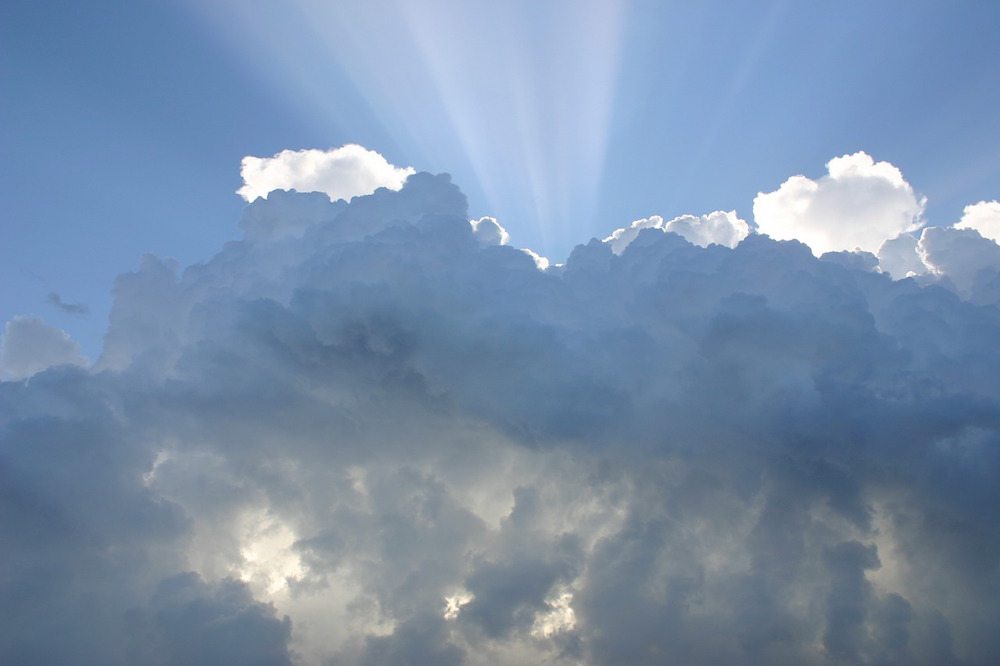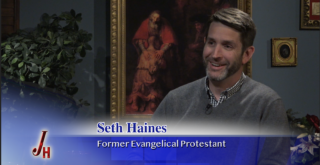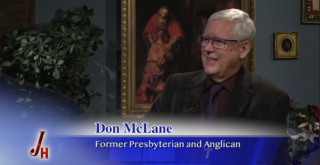
There’s no denying it. The sacraments are the heart and soul of the Catholic Faith, so much so that when people speak of returning to the Catholic Church after being away for a long time, they often phrase it in terms of returning to the sacraments. The sacraments are God’s answer to our human need for forgiveness, for transformation, and for holiness. Summing up a long tradition, St. Bonaventure spoke of the entire sacramental economy as a Divine Remedy for our original and actual sin.
The sacraments, however, are more than an answer and a remedy for sin. They are also a question. When properly understood, the sacraments ask us to live in a thought world different from the culture around us. They beg us to understand more of God and to delve more deeply into the mystical realities of heaven. They beckon us to see the Divine Presence all around us and to seek the things that are above (Col 3:1). In short, the sacraments are part and parcel not only of a sacramental economy but of a sacramental mindset, a worldview that sees the universe differently from secular culture. A sacramental worldview involves seeing the divine in the human, the invisible in the visible, and the grace of God working through ordinary people and objects.
In our previous two installments, we have seen how being Catholic means a monumental shift from an obsession with the present and an individualistic mindset to a stance of listening to the wisdom of the ages and to a developing sense of truth greater than our personal judgments. When we recognize that we are neither the origin nor creators of truth, we begin to make our way into a much broader world of thinking and spirituality. To the docile of spirit the past can come alive by showing us the fundamental continuity of the Church throughout the ages. Those imbued with a teachable heart can also begin to accept truth as discovered by others and passed on to us. No one, however, should downplay the considerable obstacles to conversion for people who have mindlessly adopted the modern worldview. Late modern people, such as we are, tend not only to reject the past and to make themselves the criterion of truth, but even more problematically, they have built-in resistors to a sacramental view of things.
The Meaning of Sacrament
Our word “sacrament” comes from the Latin sacramentum, a word used prior to the spread of the gospel in the Latin-speaking world. For example, Pliny the Younger, the Governor of Bythinia in the early second century, uses the word in his famous letter to the Emperor Trajan. In briefly describing the worship of Christians, Pliny speaks of the sacramentum of the Christians, not in our later sense of “sacrament” — he hardly would have known that meaning — but in the sense of a “pledge” or “oath.” The early Christians chose sacramentum to translate the Greek mysterion, a word that St. Paul uses in Ephesians 3:3 and other places to describe God’s plan of redemption revealed in Christ. Because the whole plan of salvation that centered on the life, death, and resurrection of Christ was God’s mysterion, later Christians came to speak of the sacramental economy which is extended through the sacraments. It is no wonder then that the Divine Mysteries would be called sacraments because they were the tangible means of conveying God’s grace to the people of God.
Since God became flesh in the Person of Jesus Christ, Christ embodied the divine realities of the whole Trinity. The reality of God becoming Man (Incarnation) is what explains the presence of the sacraments in the Church. This truth changes everything in terms of how we view all reality, both material and immaterial. The early Church Fathers expressed this truth on many occasions and in many ways but none captured it as succinctly as St. Irenaeus in the late second century:
God instructed the people, who were prone to turn to idols, instructing them by repeated appeals to persevere and to serve God, calling them to the things of primary importance by means of those which were secondary; that is, to things that are real, by means of those that are typical; and by things temporal, to eternal; and by the carnal to the spiritual; and by the earthly to the heavenly. Against Heresies, bk 4, sec 3.
Here is the essence of a sacramental view of reality, the movement of the heart from things temporal to things eternal, from physical to spiritual reality, from earthly to heavenly truth. This means that the presence, love, and grace of God are not distant things but realities all around us every day. The material world is not brute fact for us; it is filled with divine presence. Chance meetings between people are not accidents, but divinely arranged encounters with the promise of grace. At the core of Catholicism is a different way of looking at the world, a view that involves seeing every natural and human thing as a manifestation of the Divine.
The Difference a Sacramental Mindset Makes
Sadly, not all Christians look at the world through sacramental eyes. Many American Protestants view the sacraments as pure symbols of an inward faith; that the faith of the individual is what makes any sacramental power possible. “Christ alone forgives sin,” they would say, “No water in baptism or bread and wine can do that.” Thus, using water in baptism is only because it is what Christ commanded, not because baptismal water has any effect. Underlying this view is the assumption of many in the Protestant Reformation — brought to fullest expression in the English and Colonial Puritans — that God only deals directly with each human soul. The outward ordinances of the church are per se not instruments of grace. Even though John Calvin and the Calvinist tradition spoke of “means of grace,” those means were the occasions of God’s grace being given to the soul, not real instruments of grace.
A sacramental view of the physical world, however, sees God as choosing to use material reality as conduits of divine grace. Christ alone forgives sin — it is certainly true — but Christ has chosen to use the waters of baptism to convey His forgiveness and His regenerating power. The Catholic Church does not, as is sometimes ascribed to it, believe that water, bread, or wine have some inherent magical power in and of themselves. Rather, the Church believes that this divine arrangement is grace building on nature. The natural world embodies and conveys divine grace. And this is the real difference between a sacramental view of reality in Catholicism and the modern mindset of much of the West in which natural reality is just bare and brute fact.
The Church is More than Structure & Function
The difference between a flat modern worldview and a rich sacramental one becomes clear in the differing views of the church as an institution. The barren worldview of modernity views the church as just another human organization with arbitrary structures and societal functions. This is why the secular media always seems to be so uncomprehending of the Catholic Church: its doctrines, practices, and moral positions. Non-Catholic Christians in the West also tend to view the Church in this way as well, which explains why Catholic ways are so strange to them.
The sacramental view, on the other hand, sees the Church as the embodiment of Christ, priests as agents of Christ’s forgiving and life-giving grace, bishops as authoritative representatives of Christ’s authority, and the Pope as a real instrument of unity in the Church. The different aspects of the Church are all interrelated and interconnected. Doctrines are embodied in devotional practices (e.g., the Rosary), wisdom is mingled with moral judgments, and public prayers in the liturgy encapsulate biblical themes for everyone’s benefit. The common denominator of Catholicism’s diverse forms of work and worship is the enduring presence of Jesus Christ in His Mystical Body, the Church.
One of the best modern expressions of this truth came from the pen of Karl Adam in The Spirit of Catholicism. I must confess that I’ve never liked the English title of that book; in German the original was Das Wesen des Katholizismus or “The Essence of Catholicism.” Adam was not trying to capture the “Spirit” of Catholicism in the way that post-Vatican II people talk about “spirit of Vatican II,” which essentially means ignoring the details of Catholic teaching. Adam was rather attempting to get at the root of what made Catholicism tick. Among all its diverse forms and manifestations, what was the essence (Wesen) of Catholicism? Adam’s book is full of truth and wisdom but he is at his best when he captures the meaning of this faith as wholeness:
The history of Catholicism is a bold, consistent, comprehensive affirmation of the whole full reality of revelation. Of the fullness of divinity revealed in Christ according to all the dimensions of its unfolding. It is the absolute, unconditional and comprehensive affirmation of the whole full life of man, of the totality of his life-relations and life-sources. And it is the unconditional affirmation, above all else, of the deepest ground of our being, that is to say of the living God. (p.10)
As Adam proceeds to explain the implications of this wholeness, this catholicity (cf.καθολικος), he insists that Catholicism only wants “the whole Christ” and “the complete community, the orbis terrarium, as the medium wherein we grasp this Christ” (p. 10). In essence, the Church is more than its outward appearances, its structures and functions. It is the living Body of Christ.
The Church itself then is a mystery, a sacrament of God’s presence and working in the world. Because the Church and her members are “hid with Christ in God” (Col 3:3), she and they will always be, to some extent, incomprehensible to the outside world. As a sacramental reality, the Church appears ordinary and even pedestrian but within her visible structures lie an invisible, spiritual power to sanctify the world.
The Eternity of the Sacraments
When one develops a sacramental worldview, he realizes how unfathomable invisible reality is. With physical and finite things there is always a finite amount of knowledge that is to be had. Although in practical life we may not know all that is to be known of the material world, this is because of the limitations of time. Thus, in the sciences, given enough time, we could in principle know all of material reality because the objects known are physical, finite, and limited. It is quite otherwise with invisible realities; they possess an infinite depth that is forever beyond our knowledge. The deeper we pierce into the invisible realities of God, and the denizens of heaven, the more unfathomable they become. A sacramental view of reality sees the invisible in the visible and the divine presence in every physical creature. The spiritual is underneath, around, and within the physical although it is never to be fully possessed by us.
Becoming Catholic has never been easy but it may be more difficult now than ever. Seeing the world as flat, lifeless, and meaningless poses seemingly insurmountable obstacles to conversion but, once a person is willing to see physical reality as suffused with God’s presence and a conduit of grace, he has taken the first step toward deep conversion. The eternity promised in the future becomes the eternity grasped in the present for eternal life is simply to know God and Jesus Christ whom He sent.
Part Two: From Private Judgment to Universal Consent
Part Three: A Sacramental Worldview










